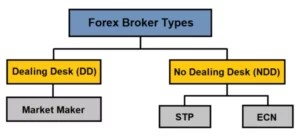Conducting trading operations in volatile markets requires accessing stable sources of assets. It allows investors to build diversified portfolios and mitigate risks caused by price spikes. Expediting cryptocurrency adoption necessitates utilizing technologies connecting a brokerage to multiple markets, including crypto and stocks. A reliable liquidity bridge (LB) facilitates finding optimal prices and expediting order completion. Nowadays, traders are interested in many asset classes and are looking for brokerage companies that support quick transaction execution. In this article, we will examine the ins and outs of LBs and highlight their key benefits.
What is a Liquidity Bridge?
The term refers to specific protocols connecting liquidity pools of various types of assets and brokerage services. In the cryptocurrency industry, they are established between markets and pools containing the funds of many investors. In the forex market, such technologies create a link between a trading site and various liquidity providers, including the following ones:
- Banks
- Brokers
- ECNs
- Financial institutions
Each provider has a liquidity pool with various asset pairings, which facilitates trading operations. Built to aggregate assets from multiple sources, LBs make it easier to find the best prices and ensure brokerage clients’ satisfaction.
When an investor expresses the desire to conduct a financial transaction with specific assets, a liquidity bridge enables brokerages to discover suitable orders across liquidity pools and discover the most profitable deal. Each LB has a specific set of features to assist market participants with getting a stable liquidity supply:
- Transfer speed: It reflects how quickly liquidity will be accessed by brokers or exchanges. The characteristic heavily depends on the amount of available assets and the throughput level of a bridge channel. Besides, bandwidth is impacted by infrastructure conditions and software updates.
- Compatibility with other software: Third-party solutions improve the process of liquidity aggregation through an LB. They include algorithm-based services that facilitate price modeling.
- Customization: Adjusting the settings of the software ensuring the stable functioning of an LB is necessary to streamline liquidity distribution and meet the specific requirements set by brokers.
The significance of dependable LBs is hard to underestimate as they facilitate handling investors’ requests using centralized solutions. Innovative technologies with a smart order routing system enable investors to streamline trade execution and discover the best order matches automatically, making it a resource-saving solution.


Turnkey Brokerage Solution For Your Business
Get the most profitable fully licensed fx/crypto brokerage software or ready-to-operate business in 48 hours. Best-in-class web & mobile trading platforms, sales-driven CRM, full integration with MT4/5, and 150+ payment providers.
Role of Liquidity Bridges in the Trading Process
The existence of connective protocols makes it easier to access assets through a market maker. An LB enables traders to benefit from profitable quotes and use deep order books without going through a variety of stages. Similarly, brokers win clients’ trust by offering a chance to finalize transactions with high profits while reducing the possibility of losing money.
Brokers choose a suitable LB with low commissions. The reliability of the liquidity bridge allows traders to experiment with a variety of strategies while deploying time-tested risk management practices. Using an LB does not require any prior experience, as their functionality is quite intuitive.
Recognizing the significance of an LB in aggregating liquidity from multiple sources gives brokers an edge and allows them to entice clients with low-latency transactions, appealing conditions, and lightning-fast order execution. Most brokers nowadays prefer to utilize specific classes of bridges to expedite order processing and minimize fees.

Main Types of Liquidity Bridges
Technological advancements shape modern infrastructure systems and impact the performance solutions connecting liquidity pools and brokers. Trading companies rely on two types of LBs:
- ECN: Such systems are designed for individual traders who value transparency. They enable all kinds of participants, not only market makers, to place orders, which contributes to improved liquidity. ECN solutions streamline 24/7 trading and stand out for short execution times and narrow spreads. The main selling point of this technology lies in the fact that it makes conducting transactions on the OTC market similar to exchange operations. The system records information about orders and automatically finds the best execution options. An ECN connects participants in a single network, which speeds up closing open positions.
- STP: Such bridges streamline executing orders and sending them to the forex market. Liquidity providers indicate their quotes, while STP brokers serve as intermediaries placing orders instead of traders. They are unable to impact prices or take any steps to disrupt the trading process. However, as they earn money by charging transaction fees, they are interested in helping traders succeed.
While both types of LB remain popular, STP systems are best suited for daily traders and long-term investors who are interested in lower fees and speedy execution. In contrast, ECNs are preferred by high-frequency traders, as they focus on increased liquidity volumes and transparent transactions.
When using STP bridges, brokers choose between banks serving as liquidity suppliers, which explains the effectiveness of such solutions. Wrapped tokens may also serve as bridges and facilitate cross-chain transactions. Two-way bridges support transfers in both directions, making it easier to move funds. Synthetic assets also streamline the process of transferring tokens between networks.
How Do Liquidity Bridges Work?
LBs streamline cross-chain exchanges, provide access to liquidity across multiple networks, and open arbitrage opportunities, allowing traders to exploit subtle price differences on various chains. Serving as a basis of the DeFi world, they enable traders to move assets. When exploring the functioning of LBs, one should focus on the following things:
- Interoperability: Establishing links between blockchains, an LB enables network participants to transfer tokens with ease.
- Architecture: Custodians hold assets on one side, while smart contracts validate transactions and finalize the burning process.
- Security: Many LBs utilize trusted services as custodians. It may be challenging to decentralize bridges without developing new technology, but some networks take the first steps to create trustless bridges using cryptographic proofs and other DeFi solutions.
- Locking mechanism: When a trader wants to move an asset across chains, a bridge locks it on the first chain and issues a wrapped token on the other one. When a transaction is finalized, the original assets are unblocked.
Users of trading platforms rely on bridges connecting them to liquidity providers. However, utilizing LBs may result in losses if the value of an asset changes when funds are being transferred between chains. Smart contract vulnerabilities may lead to similar results. As the popularity of DeFi increases, LBs should be scaled to eliminate possible delays during transfers.
How to Select Liquidity Bridge for Brokerage
When choosing an LB, consider whether it streamlines a connection between various liquidity pools and facilitates token movement. Serving as a link between DeFi protocols, trading sites, and exchanges, it makes it easier to build liquidity and increase the execution speed. Selecting the right option requires focusing on such factors:
- Extensive compatibility: A bridge should become an integral part of a current infrastructure and support its networks and protocols. If a platform is a part of the Ethereum ecosystem, its native tokens may be the best choice. Some bridges have high interoperability, making them invaluable for those who prioritize cross-chain operations.
- Security measures: The most trusted options are regularly audited by authoritative companies, which safeguards traders from losing assets.
- Latency: Short response time means traders won’t lose gains because of delays, which opens many arbitrage opportunities.
- Fees: Even though the initial investment costs may seem low, transaction fees and maintenance costs may reduce profits significantly. Each LB has a specific pricing model. Some have variable fees that change as the transaction volume increases.
- A list of supported assets: Choosing an LB requires checking whether it provides access to specific tokens an investor is interested in.
In addition, it should be possible to configure the parameters of an LB depending on the current market situation. Assessing the desired operational parameters is also necessary if an organization wants to choose a liquidity bridge suitable for specific use cases. As an integral part of the infrastructure, it should function without delays. Analyzing client feedback allows for discovering the most reliable providers with 24/7 support and extra tools. Providers deploy the latter to improve the client’s experience. Attention to technical criteria is also crucial for selecting an option that can help a brokerage stand out.






